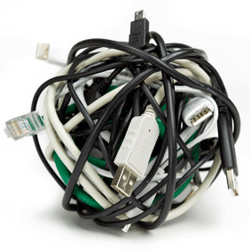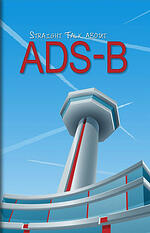
In March of 2010, the first blog post for the Duncan Download was published. Today, in honor of our 100th blog post and the success of all of Duncan Aviation, we are sharing with you a list of 100 achievements, milestones and down-right cool things to brag about that have occurred at Duncan Aviation since the first post.
Celebrate with us.
Company
- 55th anniversary of company founding observed
- 168,377 square feet of leather goods purchased for new aircraft interiors at BTL and LNK
- 5,457 Component Solutions customers served worldwide
- 7,259,089 gallons of Jet A fuel sold at Kalamazoo, MI (AZO), Battle Creek, MI (BTL) and Lincoln, NE (LNK)
- 133,864 gallons of Avgas sold at AZO, BTL and LNK
- 1,652 aircraft delivered out of maintenance at BTL, LNK and Provo, UT (PVU)
- 615 business aircraft maintenance road trips to seven countries from all locations
- 160 business aviation conventions and events attended by Duncan Aviation
- 1,342 AOG engines returned to service in the field by Engine Rapid Response
- 1,810 engines returned to service out of BTL and LNK
- 204 TFE731 MPIs performed in LNK
- 22 Pratt & Whitney Hot Sections performed in BTL
- 126,077 Fed Ex packages shipped and received totaling 3,709,389 pounds
- 258 aircraft interior refurbishments performed in BTL and LNK
- 93 business aircraft painted at BTL
- 141 aircraft Wi-Fi solutions installed per a STC at all locations; majority under a Duncan Aviation STC
- 157 in-flight internet solutions installed. Duncan Aviation is the market leader
- 30 WAAS/LPV systems installed at all locations
- 25 Falcon winglets installed at BTL and LNK
- 52 Falcon dry bay mods completed at BTL and LNK
- 24 Gulfstream water line ribbon heaters upgrades (ASC 469/173) performed
- 63 business aircraft prebuy evaluations performed in BTL, LNK and PVU
- 624 aircraft landing gear legs overhauled
- 1,851 aircraft batteries overhauled or reblocked
- 13,710,410 aviation parts sold
- 345,000 Component Solutions customer service calls
- 11,360 aviation tools calibrated
- 2,355 NDT inspections performed
- Secured full contractual logistic support for the Mexican Navy Lear program
- 4 year F20 contract renewed with Royal Norwegian Air Force
- 13,800 additional labor hours contracted with Offutt AFB in OMA
- 1 year contract renewed with Egyptian Air Force
- 2 L60 Flight Inspection Aircraft delivered to the Malaysian Department of Civil Aviation
- Signed contract for Egyptian Air Force G3 Hush Kit installation
- 62 customer dinners at BTL and LNK
- 10 customers serving on Duncan Aviation’s Customer Advisory Board
- 10 members of Duncan Aviation’s Board of Advisors
- 10 customers to serve on the new Duncan Aviation European Customer Advisory Board
Facilities
- 25th anniversary of Avionics Satellite Network observed
- 10th engine Rapid Response location opened in Seattle, WA
- 4 new Satellite Avionics locations opened
- 3rd aircraft maintenance facility opened in Provo, UT, with Bombardier (Challenger/Learjet) Authorization
- 1 new paint hangar construction project breaks ground at LNK
- AHA Fit Friendly Platinum awarded to BTL and LNK
- Regional Health Alliance Workplace Wellness Award presented to BTL
- 2010 United Way Corporate Volunteer Company of the Year presented to BTL
Authorizations & Certifications
- 30th anniversary of Honeywell Authorized TFE731 Major Service Center
- 51 revisions approved for existing STCs
- 8 type design amendments approved for existing STCs
- 16 new STCs issued
- 7 Wi-Fi STCs issued in seven airframes, including the first Wi-Fi STC in the Citation 750
- 6 WAAS/LPV STCs issued, including the first Learjet 31A, the first Honeywell NZ-2000 FMS in a Falcon 900B and Challenger 601-3A
- 6 foreign certificates renewed by audit
- 5 PMA supplements added
- 4 interior alteration STCs issued
- 1 FIS STC issued
- First iPad integration for Cabin Control in Falcon 900 certified, iCabin service mark earned
- PVU named Embraer Authorized Service Facility for Phenom 100, 300
- New authorizations added to China CAAC Repair Station Certificate
- Named exclusive repair service provider for Avidyne Legacy Display System
Private Flight Services
- Launched Safety Management System
- 11 aircraft owned, managed and operated
- 2,800 flight hours flown by 13 Duncan Aviation pilots
- 1,000,000 miles flown by 13 Duncan Aviation pilot
Team members
- 20th anniversary of Duncan Aviation Project Manager Services
- 10th anniversary of Engine Rapid Response AOG Services
- 475 military veterans serving at Duncan Aviation
- 312 new Duncan Aviation employees hired
- 230 technicians attended OEM factory training for 14 airframe or engine types
- 12 Duncan Aviation employees retired
- 217 employees volunteered for the 2010 National Special Olympic Games in Lincoln, NE
- 35 Duncan Aviation employees employed at least 25 years inducted into Silver Wings Club
- 77 babies born to Duncan Aviation families
- 15 employees serving on business aviation industry boards
- 13 employees qualified in or expanded responsibilities as Unit Members under ODA designation
- 20 multilingual representatives located in 14 countries
- 1 new European Regional Manager
- 2,746 vacation hours donated to fellow coworkers in need
- 2,327 items of food donated to local food programs
- United Way Corporate Volunteer Company of the year for 2010 (BTL)
- $177,981 raised for United Way at LNK, BTL and AZO
- Generously supported many other local charities in every community
Informational Resources
- Job status tracking launched for myDuncan.aero
- ADS-B Straight Talk book published.
- Field Guides published about business aircraft Issues
- The Duncan Download Blog launched
- “Understanding WAAS/LPV” Video Series launched
- 73 Duncan Intelligence articles published
- 72% increase in new visits to www.DuncanAviation.aero
- Updated company logo designed and introduced
- Company video, websites and brochure launched in five languages
- Web directory expanded to include profiles of customer contacts
- WAAS/LPV calculator launched to demonstrate technology value
- Inflight internet system selection tool launched
Additional Service Offerings
- Bombardier Global Service capabilities expanded
- Phased Interior Maintenance program launched
- Interior Program with 14-Day Downtime Guarantee launched for Learjet and Citation models
- Chrome-free paint process launched
- New avionics capabilities for Avidyne Flightmax indicators, ELTA and Socata ELTs
- Earth-friendly interior materials selected for interior refurbishments











